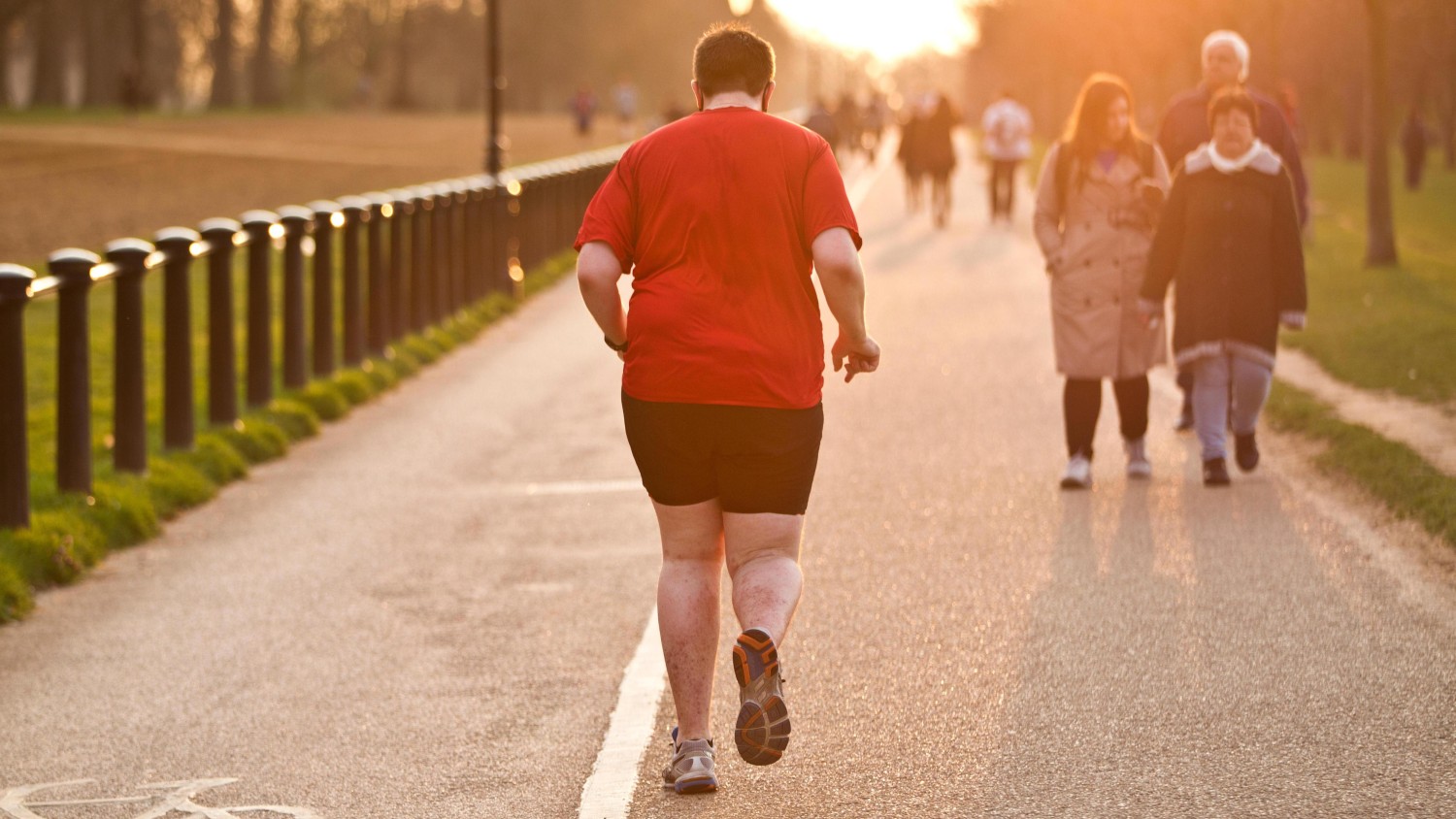
This article is more than
2 year old
NHS figures reveal childhood obesity has fallen to its lowest level since 2000, while adult obesity remains stable
England has begun to turn the tide on rising obesity for the first time in two decades, NHS figures reveal.
The number of children who are overweight has fallen to the lowest level since 2000, while obesity rates in adults have remained stable for the past five years.
The data from the annual NHS health survey indicates that a trend of gradually expanding waistlines, which has been continuing since records began in 1993, is finally levelling off. This reflects the impact of public health measures such as the sugar tax, as well as growing concerns over ultra-processed foods among the health-conscious middle classes.
The Labour government has vowed to go further by introducing measures including a ban on junk food advertising. Experts hope that these measures, combined with new weight-loss injections such as Ozempic, mean obesity rates could be put into reverse for the first time.
Professor Sir Stephen Powis, NHS national medical director, said: “Obesity remains one of the biggest public health issues we face as a society, but these figures provide reason for cautious optimism that the combination of NHS weight management programmes and public health initiatives on junk food and sugar are providing a basis on which we can press on and begin to reverse decades of rising obesity rates and the associated cost to the health service, individuals, and the economy.”
The annual data published on Tuesday, covering 2022, measured the height and weight of 9,000 adults and children across England, to determine their body mass index (BMI). In total 27 per cent of children aged 2 to 15 were found to be overweight or obese, the lowest level since 2000, and down from 30 per cent in 2019 and a peak of 34 per cent in 2004.
The average BMI of adults has not increased since 2017, having risen gradually over the previous 15 years. In total 64 per cent of adults are classed as overweight or obese. This had risen sharply from 53 per cent in 1993 to 60 per cent in 2003 and 62 per cent in 2013. The proportion who are obese, meaning their BMI is above 30, has remained at 29 per cent for the past five years. It has doubled since 1993, when 15 per cent were obese.
Campaigners welcomed signs that obesity was plateauing, but said further public health measures were vital to help people lose weight and reduce the burden on the NHS.
Katharine Jenner, the director of the Obesity Health Alliance, said: “If there is any levelling off, it could be due to a number of factors, including healthier food becoming more visible with junk food removed from supermarket checkouts, and calories available on menus.”
However, she said that large disparities remained between the wealthiest and poorest in society. Thirty-six per cent of people in the most deprived areas are obese, compared with 22 per cent in the richest areas.
Jenner said: “Health should not be the preserve of the wealthy — better food and drink for all is at the heart of creating a fairer society, and we need a commitment from the government to put the health of our children above the interests of food industry giants.”
Ministers have announced that junk food adverts will be banned on social media and television next year, as the first of a raft of public health measures Sir Keir Starmer says are essential to save the NHS.
Tam Fry, of the National Obesity Forum, said that “many more measures will be needed” to reduce childhood obesity. He said: “Ever the optimist, I am delighted that the childhood obesity figures are falling — but they are still far too high for a disease that is eminently preventable.”
The data for 2022 shows that 19 per cent of children aged 11 to 15 are classed as obese, down from 24 per cent in 2019. Among those aged two to ten, 12 per cent are obese, the same figure as in 2019. There is no comparable data for 2020 and 2021, due to disruption caused by the pandemic. The data shows that twice as many children from deprived backgrounds are overweight compared with those from wealthy areas.
Barbara Crowther, of the Children’s Food Campaign, said this showed “the vital role of other policies such as ensuring healthy school food for all, restricting unhealthy marketing practices and incentivising companies to make healthy products more affordable than unhealthy ones”.
The NHS typically spends £6.5 billion a year on treating obesity-related ill health, and has launched weight management programmes.
Clare Hambling, the NHS national clinical director for diabetes and obesity, said: “Obesity is one of the biggest threats to health in the UK — it affects every human organ system and can have a major impact on people’s lives. Obesity increases people’s risk of type 2 diabetes, heart disease, stroke, cancer, mental ill health and many other illnesses which can lead to shorter lives, or affect quality of life, with greater need for healthcare.”
The NHS figures also show a dramatic rise in the number of adults with high cholesterol, which affected 53 per cent of adults in 2022, up from 43 per cent in 2019.
A Department of Health spokesman said: “This government is urgently tackling the obesity crisis head on — shifting our focus from treatment to prevention — to ease the strain on our NHS and help people to live well for longer. This includes restricting junk food advertising on TV and online, empowering councils to block the development of new fast-food shops outside of schools and banning the sale of energy drinks to under-16s.”